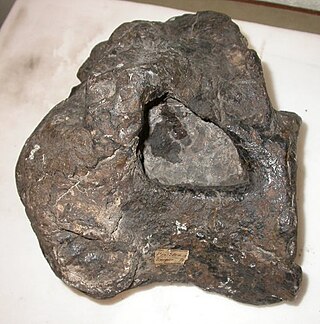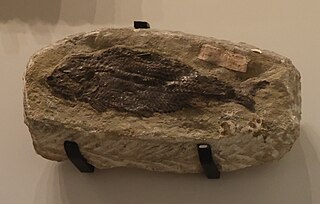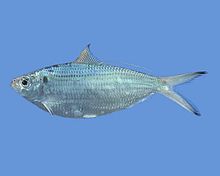
Herring are forage fish, mostly belonging to the family of Clupeidae.

QNX is a commercial Unix-like real-time operating system, aimed primarily at the embedded systems market.

The rowans or mountain-ashes are shrubs or trees in the genus Sorbus of the rose family, Rosaceae. They are native throughout the cool temperate regions of the Northern Hemisphere, with the highest species diversity in the Himalaya, southern Tibet and parts of western China, where numerous apomictic microspecies occur. The name rowan was originally applied to the species Sorbus aucuparia and is also used for other species in the genus Sorbus.

The Leptotyphlopidae are a family of snakes found in North America, South America, Africa and Asia. All are fossorial and adapted to burrowing, feeding on ants and termites. Two subfamilies are recognized.

Sprat is the common name applied to a group of forage fish belonging to the genus Sprattus in the family Clupeidae. The term also is applied to a number of other small sprat-like forage fish. Like most forage fishes, sprats are highly active, small, oily fish. They travel in large schools with other fish and swim continuously throughout the day.

"Money (That's What I Want)" is a rhythm and blues song written by Tamla founder Berry Gordy and Janie Bradford, which was the first hit record for Gordy's Motown enterprise. Barrett Strong recorded it in 1959 as a single for the Tamla label, distributed nationally on Anna Records. Many artists later recorded the tune, including the Beatles in 1963 and the Flying Lizards in 1979.

The Atlantic Spanish mackerel is a migratory species of mackerel that swims to the northern Gulf of Mexico in spring, returns to southern Florida in the eastern Gulf, and to Mexico in the western Gulf in the fall.

Ornithopsis is a genus of sauropod dinosaur, from the Early Cretaceous of England. The type species, which is the only species seen as valid today, is O. hulkei, which is only known from fragmentary remains, and has been regarded by many authors as dubious.

The Atlantic thread herring is a herring-like fish in the family Clupeidae.

Pholidophorus is an extinct genus of stem-teleost fish. Numerous species were assigned to this genus in the past, but only the type species Pholidophorus latiusculus, from the Late Triassic of Europe, is considered to be a valid member of the genus today.

Galiteuthis is a genus of glass squids from the family Cranchiidae and the subfamily Taoniinae. Squids in the genus Galiteuthis are large squids with mantle lengths measuring up to 660mm, although it has been suggested that mantle length could reach as much as 2.7m. The most distinctive feature of the speciesa in this genus are they have hooks on the tentacular clubs while there are no hooks on the arms, and by their long, thin, terminal fins.

Sardinella is a genus of fish in the family Dorosomatidae found in the Atlantic, Indian and Pacific Ocean. They are abundant in warmer waters of the tropical and subtropical oceans. Adults are generally coastal, schooling, marine fish but juveniles are often found in lagoons and estuaries. These species are distinguished by their ranges and by specific body features, but they are often confused with one another. Fish of the genus have seven to 14 striped markings along the scales of the top of the head. The paddle-shaped supramaxilla bones are characteristic; they separate Sardinella from other genera and their shapes help distinguish species. They have paired predorsal scales and enlarged fin rays.
Mastigoteuthis is a genus of whip-lash squid containing at least seven valid species. Some teuthologists consider Idioteuthis synonymous with this taxon.
Echinoteuthis is a genus of whip-lash squid containing approximately three to five species. Some teuthologists consider Idioteuthis synonymous with this taxon.
Jenkinsia is a genus of round herring in the family Spratelloididae. They are found in the central western Atlantic Ocean, the Gulf of Mexico, and the Caribbean Sea. Four recognized species are placed in this genus.

Herring are forage fish in the wild, mostly belonging to the family Clupeidae. They are an important food for humans. Herring often move in large schools around fishing banks and near the coast. The most abundant and commercially important species belong to the genus Clupea, found particularly in shallow, temperate waters of the North Pacific and North Atlantic Oceans, including the Baltic Sea, as well as off the west coast of South America. Three species of Clupea are recognized; the main taxon, the Atlantic herring, accounts for over half the world's commercial capture of herrings.
The Pacific thread herring or deep-bodied Pacific thread herring is a herring-like fish in the family Clupeidae. It is found in the Eastern Pacific. It can grow to 30 cm (12 in) total length.
Nematolampas is a genus of squid from the family Lycoteuthidae. The genus comprises two species both of which are known from only a few males. The type species, Nematolampas regalis has been recorded from the subtropical South Pacific and the second species, Nematolampas venezuelensis, is from the tropical western North Atlantic. The main distinguishing feature of this genus is that arms III are very elongated and thread-like and have no suckers near their tips. As only males have been captured it is not known if this feature is present in females.
Thread herring may refer to either of two herring-like fish in the family Clupeidae:













